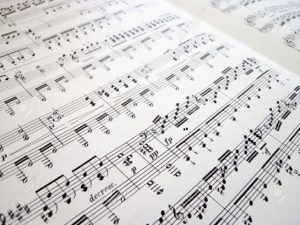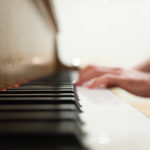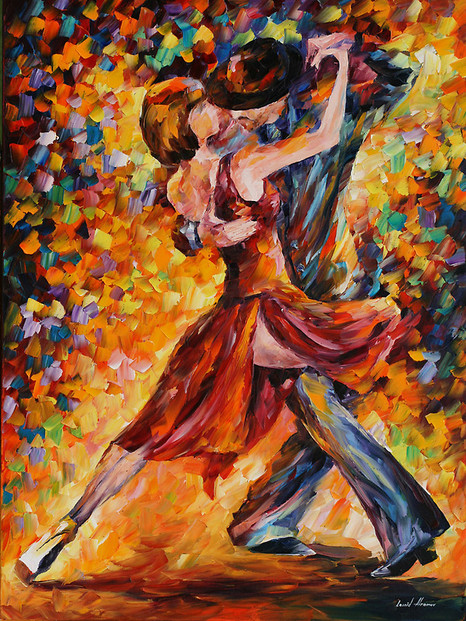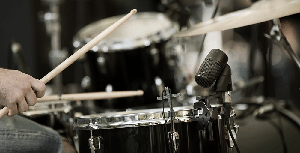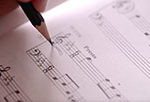
Valentine's Day is coming.
What is your favorite love story? While not necessarily the most memorable one, Romeo and Juliet is definitely one of the most well-known love stories.
The story itself originated from an Italian tale, and many literary versions appeared in the sixteenth century, among which was Shakespeare's tragedy. The story has been adapted by novels, movies, and musical works.
In this article, we'll take a look at three musical works based on Romeo and Juliet by Hector Berlioz, Sergei Prokofiev, and Pyotr Ilyich Tchaikovsky, as listed in the table below.
Table 1: Dates, Genres, Instrumentations, Movements, and Lengths of Romeo and Juliet Settings of Berlioz, Tchaikovsky, and Prokofiev
Berlioz | Tchaikovsky | Prokofiev | |
year | 1839 | 1880 | 1936 |
genre | Dramatic symphony | overture-fantasia | ballet |
instrumentation | soprano, tenor, bass, chorus, and orchestra | an orchestra | an orchestra and dancers |
movements | 7 sections, 3 parts | 1 movement | 4 acts |
length | 95 minutes | 20 minutes | 130 minutes |
Roméo et Juliette (1839) by Hector Berlioz (1803–1869): a dramatic symphony
Berlioz's Roméo et Juliette was based on Shakespeare’s plays. But, rather than using Shakespeare's text directly, Berlioz used the text by Emile Deschamps,which was based on Garrick’s version of Shakespeare.
The composition of Roméo et Juliette was also inspired by Berlioz's wife at that time, Harriet Smithson, whom Berlioz first saw in the Shakespeare Hamlet and later married. Furthermore, the renown violinist Niccolò Paganini was also an important contributor.
When Paganini acquired a Stradivarius viola in 1833, he asked Berlioz to write a viola solo. The end result was Berlioz’s Harold en Italie, Symphony in Four Parts with Viola Obligato. Paganini, however, did not like the work when he saw the sketches. The work was premiered in 1834, and when Paganini finally heard it in 1838, he was so moved that he sent Berlioz 200,000 francs, which allowed Berlioz to compose whatever he wanted to compose. Therefore Roméo et Juliette was composed.
Berlioz's Roméo et Juliette (1839) is a dramatic symphony (op. 17) for soprano, tenor, bass, chorus, and orchestra. In his preface Berlioz indicates that the genre of this work is a choral symphony, emphasizing the instrumental aspect of "symphony." Indeed, neither Romeo nor Juliet are represented by the soloists; the orchestra play the central role of enacting the story, and therefore this work is not an opera or oratorio, in which voices play characters and sing or speak dialogues. Berlioz's emphasis on instrumental power of a symphony was influenced by Beethoven; Berlioz heard Beethoven's Third, Fifth, and Sixth Symphonies in the late 1820s and they made a big impact on him. The work is also not a complete representation of the literary work; it instead captures the composer's reaction to the story.
This symphony has seven movements and is divided in three parts:
Part I:
- Introduction: fight - tumult - intervention of the prince; prologue - strophes - scherzetto
Part II:
- Romeo alone: sadness - concert and a ball - grand party at the Capulet
- Love scene: serene night - the Capulet's Garden - silence and the desert
- Scherzo: Queen Mab - the fairy of dream
Part III:
- Funeral march of Juliet
- Romeo at the Capulet's tomb: invocation - Juliet's waking - exuberant joy, distress, final fear and death of the two lovers
- Finale: the crowd rushes to the cemetery - fight between the Capulets and the Montagus - Recitative and Air of Père Laurence - pledge for reconciliation
Berlioz used instruments to portray drama and voices to depict narrative, and therefore the love scene is purely instrumental. The lovers’ theme is introduced by the cellos. Let’s hear the intense love between the two lovers presented by the drama in instruments.
Part II, scene 3: Love scene
Tracing the love theme, you’ll see Berlioz’s masterful handling of themes, as he does in Sinfonie fantastique, in which an idée fixe that represents the love of the main character undergoes development as he becomes more and more intoxicated. In the Love scene, the love theme is presented in its complete form at first but undergoes variations, suggesting the changing mental states of Romeo. The timings of the themes can help you find the specific passages in the video.
At first, the theme is played by cornets and violas in its original form at 1:57.



Example 1.1: mm. 147–154 (starting at 1 after rehearsal 35), love theme, cornet + viola (1:57)
Below is the theme in its original form again at 3:50, with expansiveness in the strings’ sound.

Example 1.2: mm. 173–180 (starting at 1 after rehearsal 36), strings (3:50)
Fast-forward to 11:15, the clarinets play a varied form of the theme. Notice that although the theme starts differently, it’s recognizable by the fourth measure. Compared to the large numbers of strings that play the theme in the last example, this varied theme is played by clarinets and sound much lonelier.

 Example 1.3: mm. 332–340, (starting at 6 before rehearsal 42), love theme varied, clarinet (11:15)
Example 1.3: mm. 332–340, (starting at 6 before rehearsal 42), love theme varied, clarinet (11:15)
At 12:18, another slightly varied theme is played, with the recognizable pattern of a dotted quarter note, three eighth notes, and an eighth note followed by a quarter note (see second and third measures in the following example). This theme is played quietly; furthermore, the lengthened note values at the end slow down the sense of flow. Together, the lower volume and the slower pace make the theme sound subdued.


Example 1.4: mm. 350–358, (starting at 12 after rehearsal 42), love theme in a subdued form (12:18)
Not long before the end of the scene, the love theme returns in the original form and is played with an expansive sound, giving the false sense that everything will be alright.


Example 1.5: mm. 367–372, (starting at rehearsal 43), love theme in original form, expansive, strings and bassoons (13:19)
However, at the very end, the theme is played one last time in fragments. Things are not alright after all, and Romeo and Juliet’s story has ended with their deaths.

Example 1.6: mm. 376–381, (starting at 9 after rehearsal 43), love theme fragmented, clarinets and strings (13:52)
Here is Roméo et Juliette in its entirety. You can also find recordings and scores here.
Ready to learn music?
Start learning with our 30-day free trial! Try our music courses!
About Liberty Park Music
LPM is an online music school. We teach a variety of instruments and styles, including classical and jazz guitar, piano, drums, and music theory. We offer high-quality music lessons designed by accredited teachers from around the world. Our growing database of over 350 lessons come with many features—self-assessments, live chats, quizzes etc. Learn music with LPM, anytime, anywhere!


